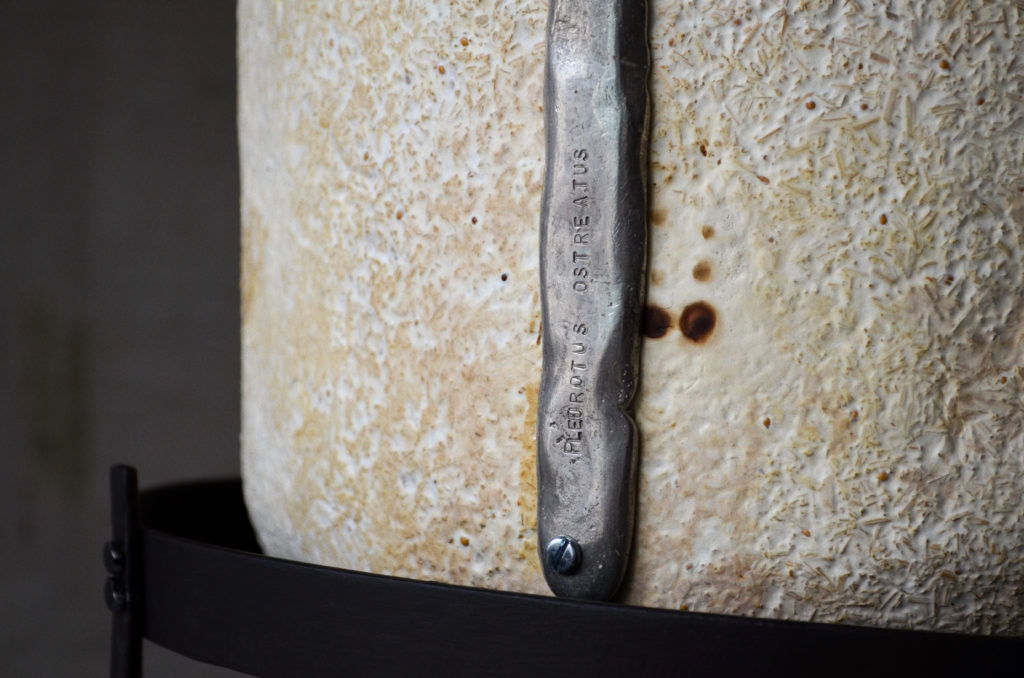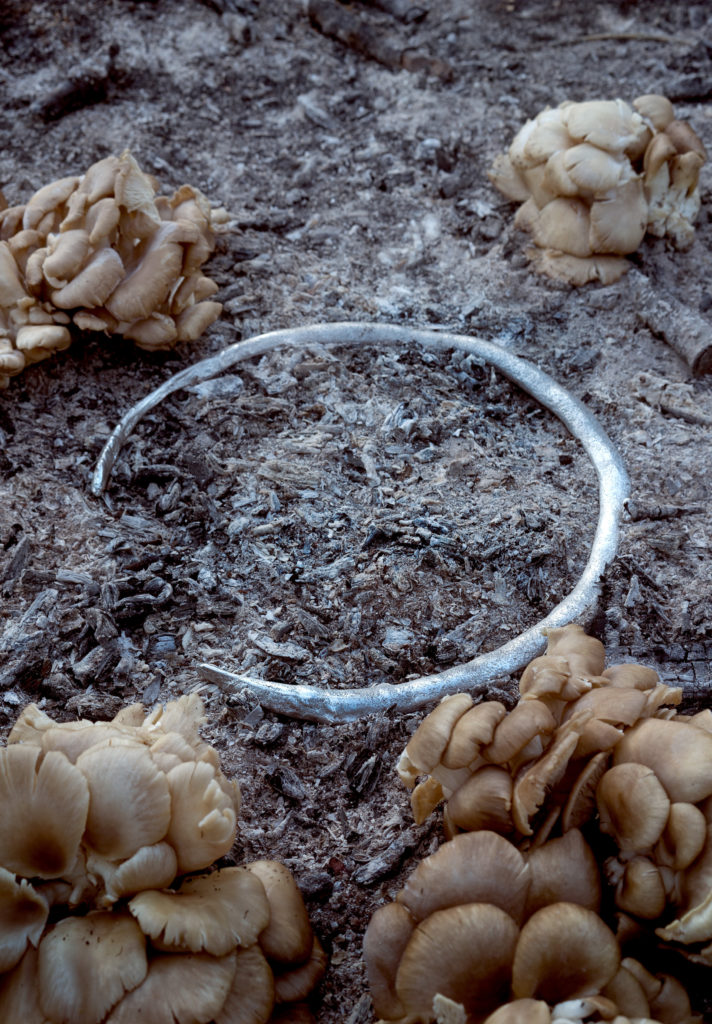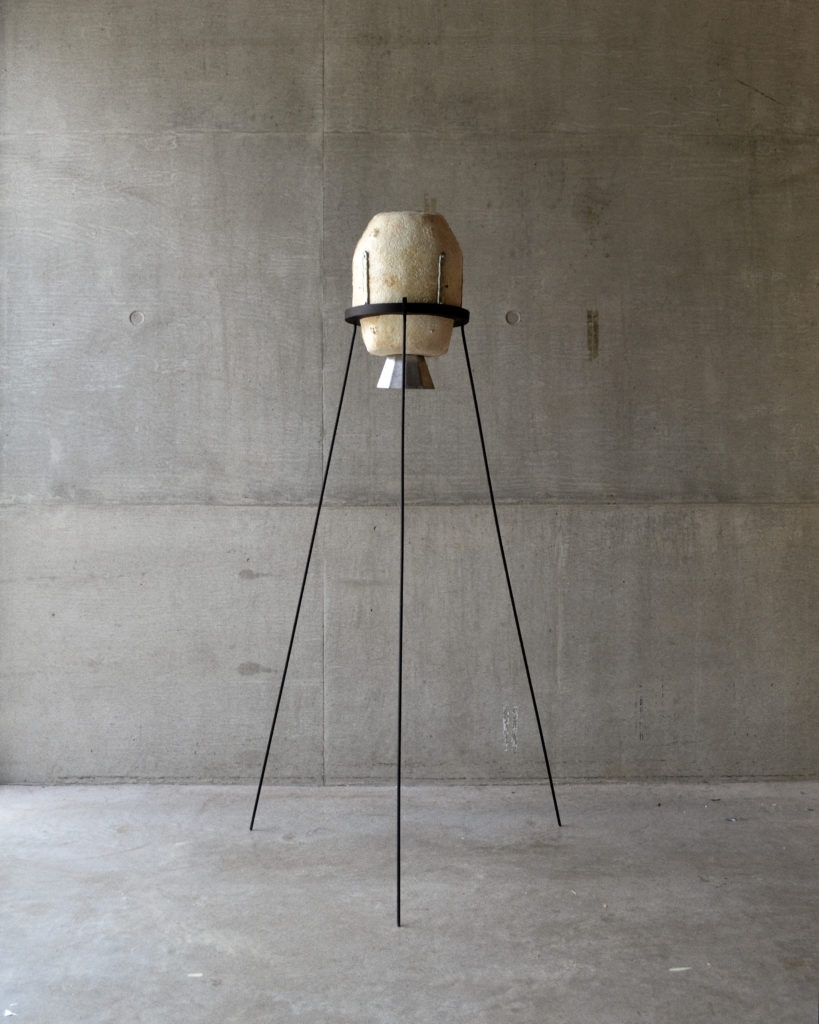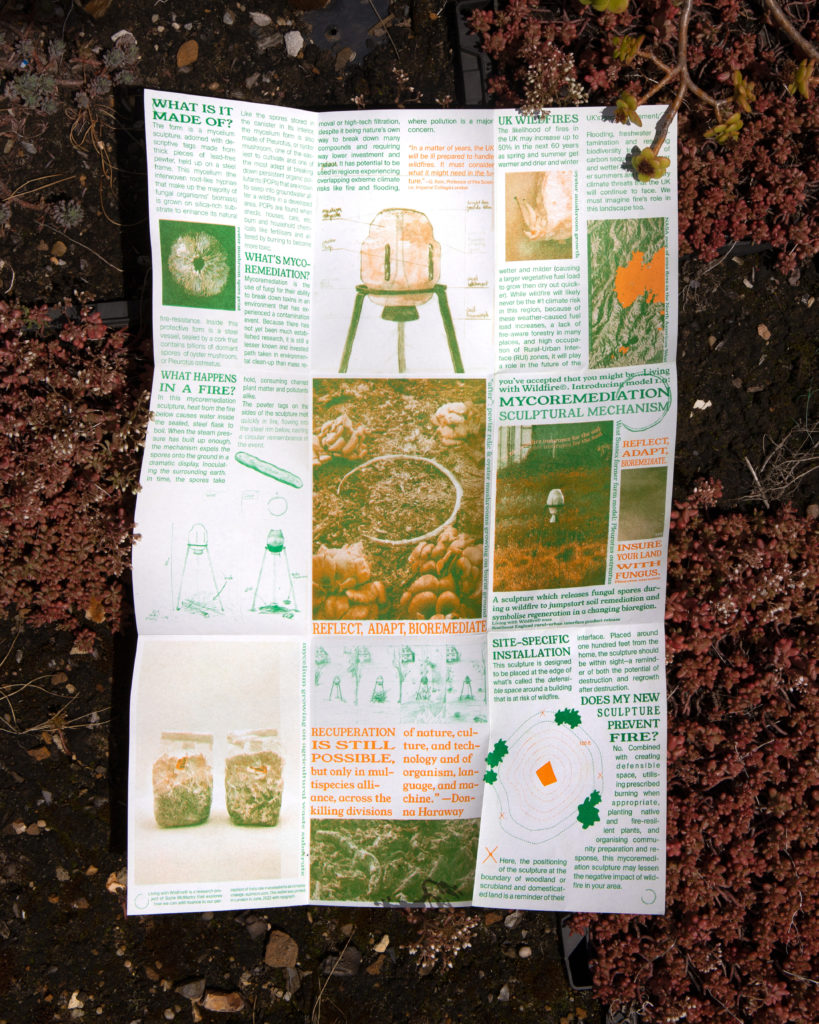
Changing winter and summer conditions will increase UK wildfire risk by up to 50% by 2080. We need to [re]adopt a more nuanced mindset around fire to understand that in varied moderation, fire is a vital part of healthy ecosystems. As images of devastatingly orange skies from the most fire-prone areas around the world make loud headlines, this project asks: can we preempt localized wildfire doom in the UK and find hope by bringing preventative and remediating measures out into the open?

The form is a mycelium sculpture, adorned with descriptive tags made from thick pieces of lead-free pewter, held up on a steel frame. This mycelium (the interwoven root-like hyphae that make up the majority of fungal organisms’ biomass) is grown on silica-rich substrate to enhance its natural fire-resistance. Inside this protective form is a steel vessel, sealed by a cork that contains billions of dormant spores of oyster mushroom, or Pleurotus ostreatus.

If a wildfire reaches brush piled underneath the frame (gathered from fire prevention forest thinning), steam builds in the vessel, triggering a ‘spore explosion’ that inoculates the surrounding earth and detritus with Pleurotus. The fungi will aid in erosion prevention and begin to break down toxic persistent organic pollutants that are found after fires in partially developed landscapes. The pewter tags melt quickly, flowing into the steel rim below, casting a remembrance of the event.

As an ecologically attuned art piece and small-scale, decentralised wildfire insurance plan, Living with Wildfire encourages reflection, adaptation and bioremediation, while leaving room for the grief that comes with witnessing a changing bioregion.


